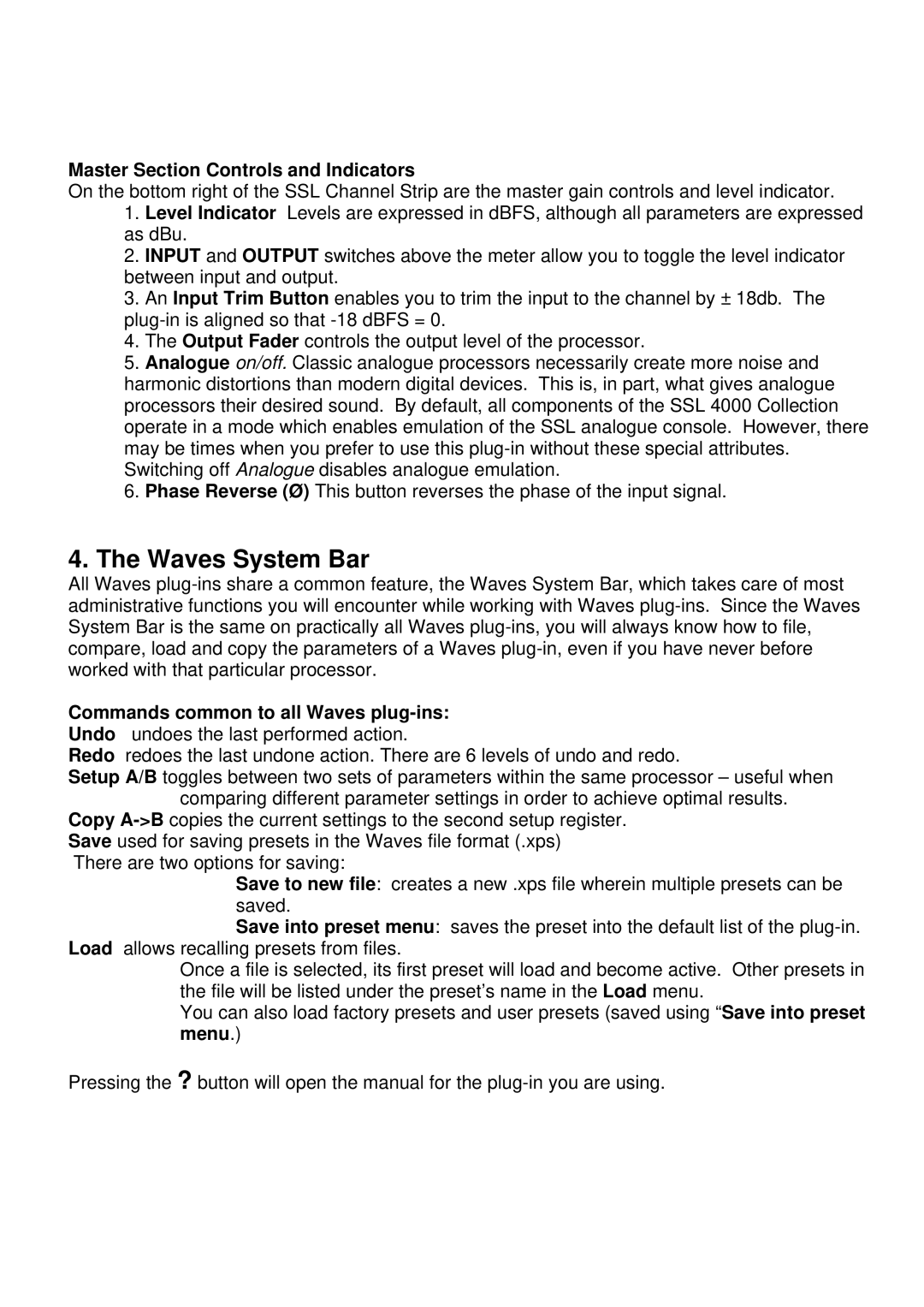Master Section Controls and Indicators
On the bottom right of the SSL Channel Strip are the master gain controls and level indicator.
1.Level Indicator Levels are expressed in dBFS, although all parameters are expressed as dBu.
2.INPUT and OUTPUT switches above the meter allow you to toggle the level indicator between input and output.
3.An Input Trim Button enables you to trim the input to the channel by ± 18db. The
4.The Output Fader controls the output level of the processor.
5.Analogue on/off. Classic analogue processors necessarily create more noise and harmonic distortions than modern digital devices. This is, in part, what gives analogue processors their desired sound. By default, all components of the SSL 4000 Collection operate in a mode which enables emulation of the SSL analogue console. However, there may be times when you prefer to use this
6.Phase Reverse (Ø) This button reverses the phase of the input signal.
4.The Waves System Bar
All Waves
Commands common to all Waves plug-ins:
Undo undoes the last performed action.
Redo redoes the last undone action. There are 6 levels of undo and redo.
Setup A/B toggles between two sets of parameters within the same processor – useful when comparing different parameter settings in order to achieve optimal results.
Copy
There are two options for saving:
Save to new file: creates a new .xps file wherein multiple presets can be saved.
Save into preset menu: saves the preset into the default list of the
Once a file is selected, its first preset will load and become active. Other presets in the file will be listed under the preset’s name in the Load menu.
You can also load factory presets and user presets (saved using “Save into preset menu.)
Pressing the ? button will open the manual for the
